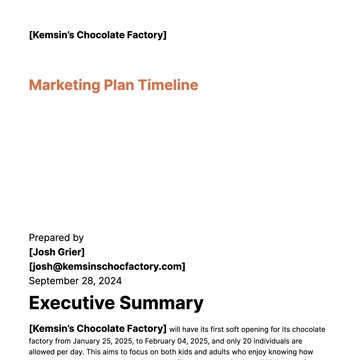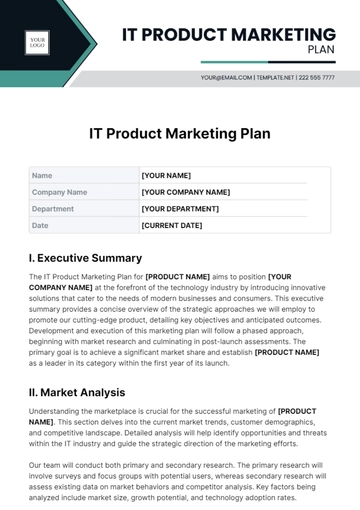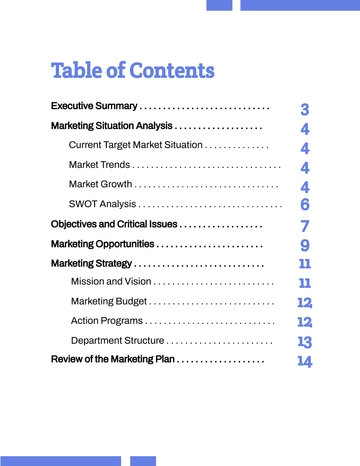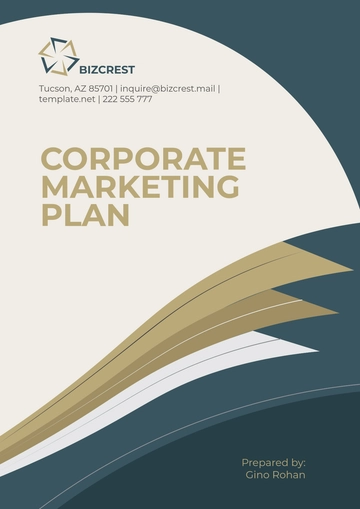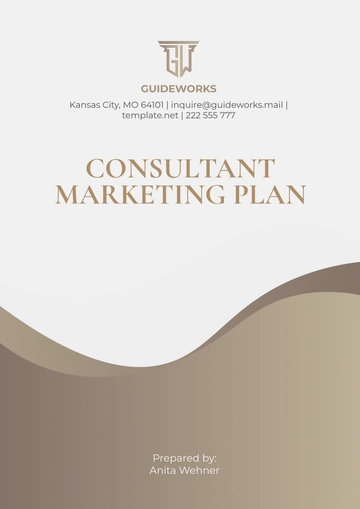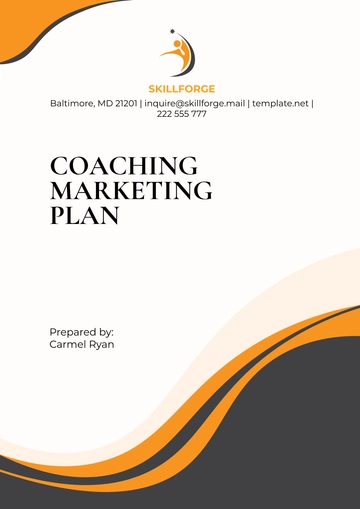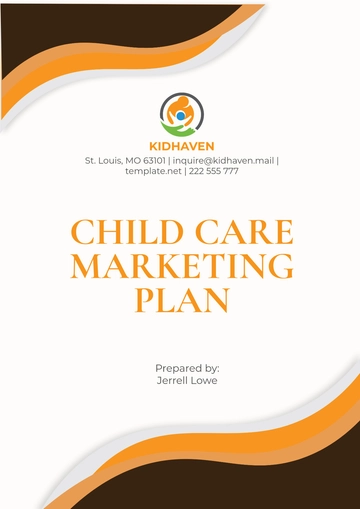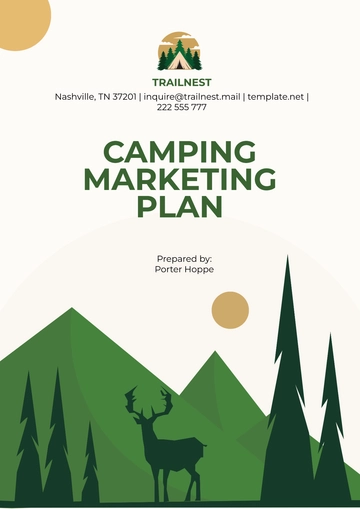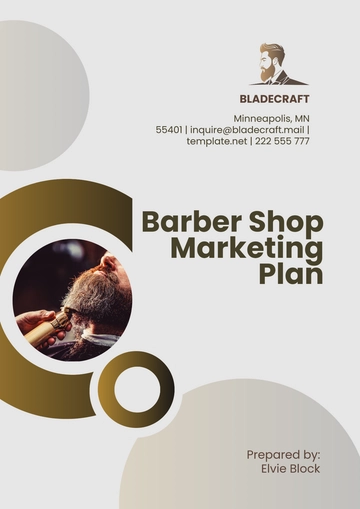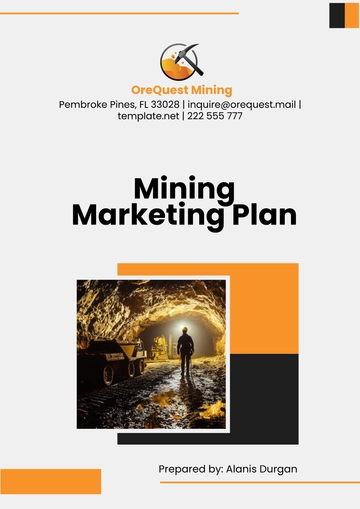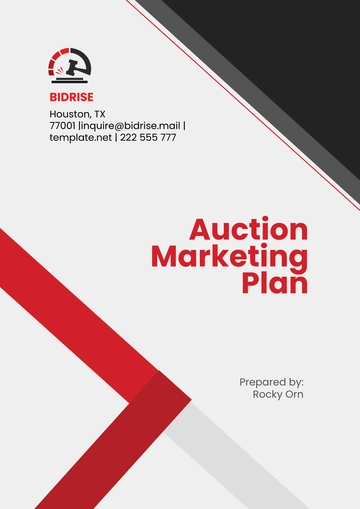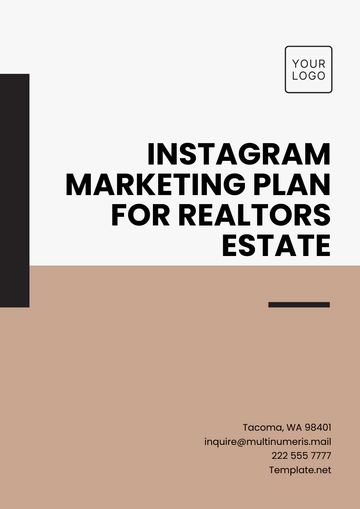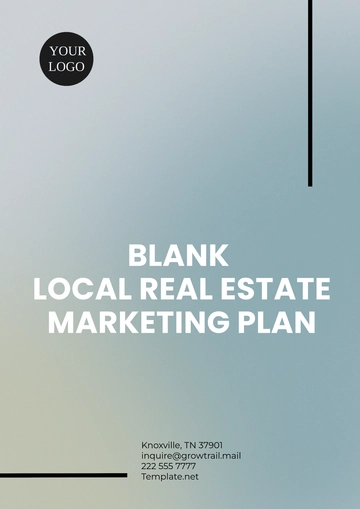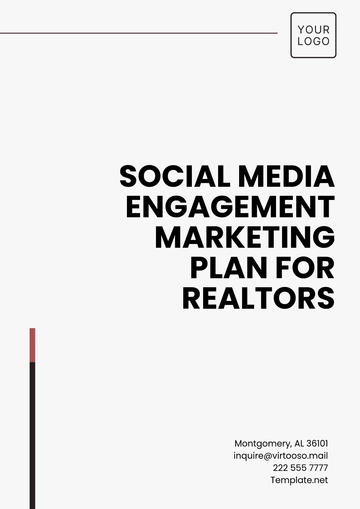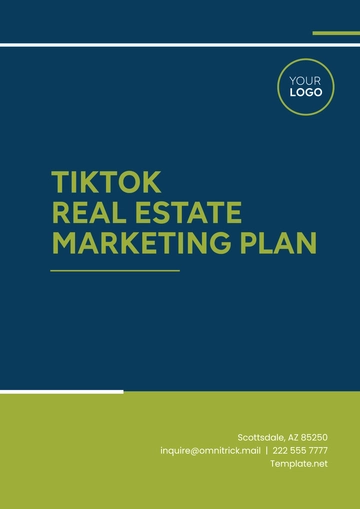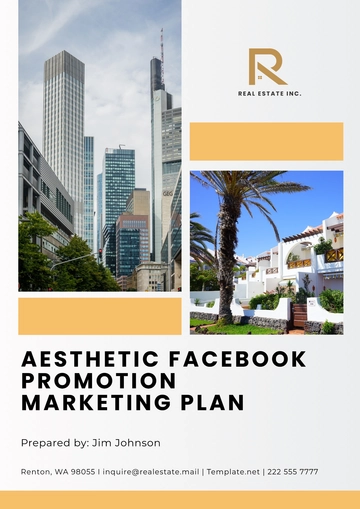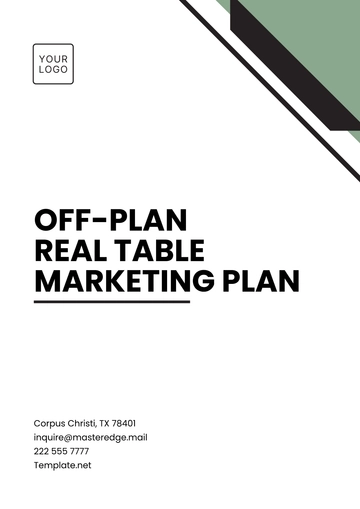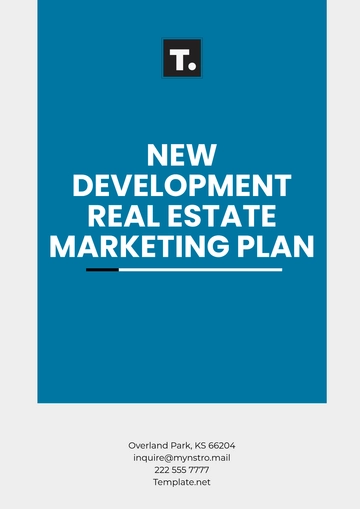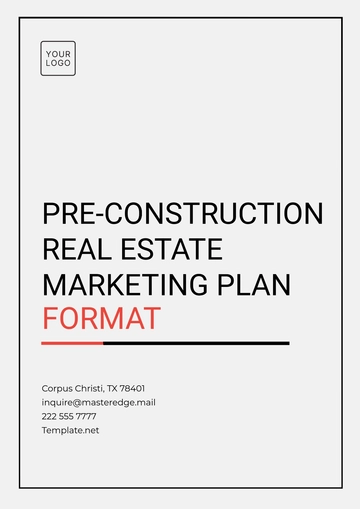Free Travel Agency Marketing Plan
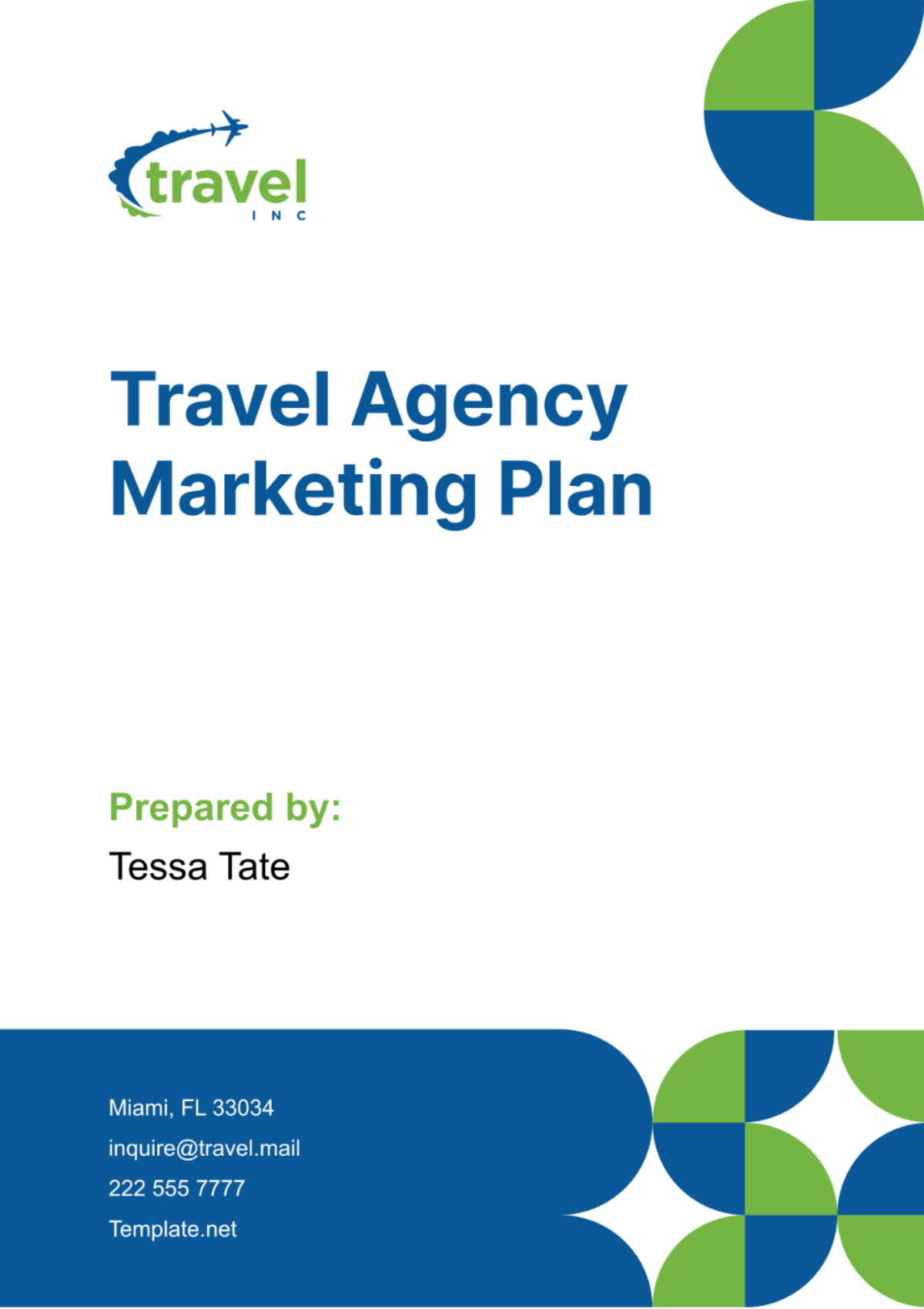
I. Executive Summary
A. Overview of the Travel Agency
Our travel agency, known as [Your Company Name], prides itself on its expertise in designing and curating one-of-a-kind travel experiences that cater specifically to adventure-seekers looking for unforgettable trips and explorations across the world.
B. Summary of Key Objectives
Our primary objectives are to increase bookings by 20% within the next fiscal year, expand our market share in the adventure travel segment, and enhance customer retention through personalized service and tailored offerings.
C. Highlights of Target Market and Unique Selling Proposition
Our target market consists of adventure enthusiasts aged 25-45, with a passion for immersive cultural experiences and outdoor activities. [Your Company Name] sets itself apart through our expertly crafted itineraries, personalized service, and emphasis on sustainable and responsible travel practices.
D. Overview of Marketing Strategies
Our comprehensive marketing strategies include a diverse blend of both online and offline channels to ensure broad and effective reach. Additionally, we strategically partner with local tour operators and accommodations to enhance our service offerings and extend our market penetration. To captivate our audience, we place a strong emphasis on content marketing, utilizing it to engage and inspire potential customers by delivering valuable and compelling content.
II. Market Analysis
A. Overview of the Travel Industry
The travel industry is experiencing steady growth, with an increasing demand for experiential travel and off-the-beaten-path destinations. Consumers are seeking authentic experiences and meaningful connections with local cultures.
B. Trends and Developments
Trends such as ecotourism, wellness travel, and adventure tourism are gaining momentum, reflecting a shift towards more sustainable and enriching travel experiences.
C. Analysis of Competitors
Competitors in the adventure travel space include both large tour operators and niche travel agencies, each offering unique value propositions and targeting specific segments of the market.
D. Identification of Market Segments
Our target market consists of adventure seekers, cultural explorers, and nature enthusiasts who value experiences over material possessions and seek to connect with destinations on a deeper level.
E. Customer Demographics and Preferences
Our target demographic includes millennials and young professionals with disposable income, a desire for authenticity, and a willingness to invest in unique travel experiences.
III. Target Audience
A. Description of Ideal Customers
Our perfect clientele consists of adventurous travelers; these are individuals who have a strong desire for immersive experiences that allow them to delve deeply into the cultural fabric of a region, as well as those who seek thrilling outdoor adventures in locales that are less commonly frequented by the typical tourist.
B. Demographic and Psychographic Profile
They are typically aged 25-45, digitally savvy, environmentally conscious, and value experiences that enrich their lives and broaden their perspectives.
C. Travel Preferences and Behaviors
They have a preference for travel itineraries that are personalized to their specific interests and needs, seek out authentic experiences that provide a deep dive into local cultures, and favor travel options that are sustainable in order to minimize their environmental footprint.
D. Customer Needs and Pain Points
Our customers seek hassle-free travel planning, expert guidance, and memorable experiences that align with their interests and values. They may experience pain points related to information overload, decision fatigue, and uncertainty about travel logistics.
IV. Unique Selling Proposition (USP)
A. Definition of USP
[Your Company Name] distinguishes itself through our meticulously curated itineraries, personalized service, and commitment to sustainable and responsible travel practices.
B. Explanation of What Sets the Agency Apart
Unlike mass-market tour operators, we prioritize quality over quantity, offering small-group experiences led by local guides who provide insider knowledge and authentic insights into each destination.
C. Benefits for Customers
Our customers benefit from immersive cultural experiences, off-the-beaten-path adventures, and peace of mind knowing that their travels support local communities and minimize their environmental footprint.
D. Competitive Advantage Analysis
Our competitive advantage lies in our ability to create tailor-made experiences that cater to the unique preferences and interests of our customers, fostering meaningful connections and lifelong memories.
V. Marketing Objectives
A. Specific, Measurable Goals
Increase bookings by 20% within the next fiscal year by implementing targeted marketing campaigns, optimizing our online booking process, and expanding our product offerings.
Expand market share in the adventure travel segment by 15% through targeted advertising efforts, strategic partnerships with adventure tour operators, and the development of new adventure-focused tour packages.
Achieve a customer satisfaction rating of 90% or above by enhancing our customer service training, implementing a feedback loop for continuous improvement, and offering personalized follow-up communication to address any issues or concerns.
B. Timeframe for Achievement
Goals are set for the next fiscal year, with quarterly milestones to track progress and adjust strategies as needed. Monthly performance reviews will allow us to stay agile and responsive to changing market conditions and customer needs.
C. Alignment with Business Objectives
Our marketing objectives align with the agency's overarching goal of growth and profitability while maintaining a commitment to sustainability and responsible travel practices. By increasing bookings, expanding market share, and enhancing customer satisfaction, we aim to drive revenue and build long-term relationships with our clients.
D. Examples: Increase Bookings by X%, Expand Market Share, Improve Customer Retention:
Increase bookings by 20% through targeted marketing campaigns and strategic partnerships, aiming to generate a total of 10,000 bookings by the end of the fiscal year.
Expand market share by 15% in the adventure travel segment, capturing a larger portion of the market by offering specialized adventure packages and promoting unique experiences in remote destinations.
Improve customer retention by implementing a loyalty program and personalized follow-up communications, aiming to achieve a customer satisfaction rating of 90% or above based on post-trip surveys and feedback.
VI. Marketing Strategies
A. Online Marketing
Website Optimization: Enhance website user experience by improving site navigation, optimizing load times, and implementing responsive design to ensure compatibility across devices.
Search Engine Optimization (SEO): Conduct keyword research, optimize meta tags and descriptions, and regularly update website content to improve search engine rankings and increase organic traffic.
Pay-Per-Click (PPC) Advertising: Launch targeted PPC campaigns on Google Ads and social media platforms, utilizing keyword targeting, ad extensions, and A/B testing to maximize ROI and drive conversions.
Social Media Marketing: Develop a content calendar with engaging visuals and storytelling to showcase our destinations and experiences, engage with followers through interactive posts and contests, and leverage user-generated content to build trust and credibility.
B. Offline Marketing
Traditional Advertising: Place print ads in travel magazines, newspapers, and brochures, highlighting our unique selling points and special offers to reach a broader audience of potential travelers.
Direct Mail Campaigns: Design personalized mailers and brochures tailored to specific demographics and travel interests, incorporating compelling visuals and persuasive copy to drive engagement and conversions.
Events and Sponsorships: Participate in travel expos, adventure festivals, and community events to network with potential customers, distribute promotional materials, and sponsor relevant activities to increase brand visibility and awareness.
C. Partnerships and Collaborations
Airlines, Hotels, Tour Operators: Establish mutually beneficial partnerships with airlines, hotels, and local tour operators to offer exclusive discounts, bundled packages, and value-added experiences to our customers.
Destination Management Organizations: Collaborate with destination marketing organizations to co-promote our travel packages, leverage their local expertise and resources, and participate in joint marketing campaigns to attract travelers to lesser-known destinations.
D. Content Marketing
Blogging: Publish informative and engaging blog posts covering destination guides, travel tips, and insider insights, optimizing content for SEO and sharing across social media channels to drive traffic and establish our agency as a trusted resource for travel information.
Video Marketing: Produce high-quality travel videos showcasing our destinations and experiences, incorporating storytelling, drone footage, and testimonials to inspire and captivate our audience, and distribute videos on YouTube, social media platforms, and our website to reach a wider audience of potential travelers.
Email Marketing: Develop targeted email campaigns segmented by customer interests and travel preferences, delivering personalized recommendations, exclusive offers, and relevant content to subscribers to nurture leads, encourage bookings, and foster loyalty.
E. Customer Relationship Management (CRM)
Loyalty Programs: Launch a tiered loyalty program offering rewards such as discounts, upgrades, and exclusive access to curated experiences based on customer spending and engagement levels, incentivizing repeat bookings and fostering long-term loyalty.
Customer Retention Strategies: Implement a proactive approach to customer service, including post-trip surveys, follow-up emails, and personalized communications to address any issues or concerns, gather feedback, and show appreciation for our customers, ultimately enhancing their overall experience and satisfaction.
VII. Marketing Mix (4Ps)
A. Product
Description of Travel Services: [Your Company Name] offers a diverse range of travel experiences, including adventure tours, cultural immersions, wildlife safaris, and wellness retreats, each meticulously curated to provide unforgettable journeys for our clients.
Packages and Destinations: Our packages feature handpicked destinations around the globe, from iconic landmarks to hidden gems, with customizable itineraries tailored to suit the preferences and interests of our travelers.
Special Offers and Promotions: We regularly update our offerings with seasonal promotions, early booking discounts, and exclusive deals on selected packages to incentivize bookings and provide added value for our customers.
B. Price
Pricing Strategy: Our pricing strategy is based on a combination of factors, including destination popularity, seasonality, and included amenities, with transparent pricing and no hidden fees to build trust and confidence among our customers.
Discounts and Incentives: We offer discounts for early bookings, group bookings, and referrals, as well as loyalty rewards and exclusive perks for repeat customers to encourage repeat business and reward loyalty.
C. Place
Distribution Channels: Our travel services are available through multiple distribution channels, including our website, physical offices, partner agencies, and online travel agencies (OTAs), providing convenience and accessibility for our customers.
Physical Locations: We have strategically located offices in key travel hubs and popular tourist destinations, staffed by knowledgeable travel consultants who provide personalized assistance and expert advice to our clients.
D. Promotion
Advertising Campaigns: We launch targeted advertising campaigns across various channels, including online display ads, social media ads, and print media, highlighting our unique selling points, special offers, and featured destinations to attract attention and drive bookings.
Public Relations: We cultivate relationships with media outlets, travel influencers, and bloggers to generate positive publicity and media coverage, leveraging press releases, media events, and familiarization trips to showcase our brand and offerings.
Sales Promotions: We run seasonal promotions, flash sales, and limited-time offers on selected packages, as well as exclusive discounts for newsletter subscribers and social media followers, to create a sense of urgency and encourage immediate bookings.
VIII. Marketing Budget
A. Allocation of Financial Resources
Our marketing budget is allocated across various channels and activities based on their effectiveness and potential ROI, with a focus on maximizing impact and driving measurable results.
Budget allocations are reviewed quarterly and adjusted as needed to reallocate resources to high-performing channels and opportunities.
B. Breakdown by Marketing Activities
The majority of our budget is allocated to digital marketing channels, including online advertising, search engine optimization, and content marketing, which offer cost-effective ways to reach and engage our target audience.
A portion of our budget is allocated to offline marketing activities, such as print advertising, direct mail campaigns, and event sponsorships, to complement our online efforts and reach audiences through multiple touchpoints.
C. Consideration of Return on Investment (ROI)
We track the performance of each marketing activity and campaign to measure its ROI, using key performance indicators such as cost per acquisition (CPA), conversion rate, and customer lifetime value (CLV) to assess effectiveness and optimize our marketing spend.
By analyzing ROI metrics regularly, we can identify areas of opportunity, reallocate resources to high-performing channels, and refine our marketing strategies to achieve maximum impact and efficiency.
D. Contingency Plans
We maintain contingency funds within our marketing budget to address unforeseen challenges, market fluctuations, and opportunities that may arise throughout the year, allowing us to adapt quickly and capitalize on emerging trends or mitigate risks as needed.
Contingency plans include flexibility in budget reallocation, rapid response strategies for crisis management, and scenario planning to anticipate potential disruptions and minimize their impact on our marketing objectives and performance.
IX. Implementation Plan
A. Detailed Action Steps
We have developed a detailed implementation plan outlining specific action steps, timelines, and responsibilities for each marketing activity and campaign, ensuring clear accountability and coordination across teams.
Action steps include tasks such as campaign setup, content creation, ad deployment, audience targeting, performance monitoring, and optimization, with milestones and deadlines to track progress and ensure timely execution.
B. Timeline and Deadlines
Our implementation plan includes a timeline with milestones, deadlines, and key dates for each marketing activity and campaign, mapped out over the course of the fiscal year to ensure strategic alignment and efficient resource allocation.
We prioritize tasks based on their impact and urgency, with regular progress reviews and adjustments to the timeline as needed to accommodate changes in priorities, market dynamics, or internal constraints.
C. Responsibilities and Roles
Responsibilities are clearly defined for each team member involved in the implementation of the marketing plan, including marketing managers, coordinators, designers, copywriters, and digital specialists, with clear communication channels and escalation procedures in place.
Roles include campaign management, content creation, media buying, analytics tracking, and performance reporting, with cross-functional collaboration and teamwork to ensure seamless execution and alignment with our marketing objectives.
D. Monitoring and Reporting Mechanisms
We have established monitoring and reporting mechanisms to track the performance of our marketing activities and campaigns in real-time, using analytics tools, dashboards, and performance metrics to assess progress and identify areas for optimization.
Regular performance reports are generated and shared with key stakeholders, including senior management, marketing teams, and external partners, providing insights, recommendations, and actionable insights to inform decision-making and drive continuous improvement.
X. Evaluation and Metrics
A. Key Performance Indicators (KPIs)
We track essential metrics like website traffic, conversion rates, booking volume, and customer satisfaction scores to measure the effectiveness of our marketing efforts and gauge progress towards our goals.
B. Metrics for Success Measurement
Our success metrics include increased brand awareness, customer engagement, lead generation, and revenue growth, alongside qualitative measures of satisfaction and loyalty, helping us assess performance and make informed decisions.
C. Tools for Tracking Results
We use analytics platforms, CRM systems, and social media tools to monitor data, providing insights into website traffic, campaign performance, and customer interactions in real-time.
D. Analysis and Reporting Frequency
We generate regular reports on a weekly, monthly, quarterly, and annual basis, analyzing key metrics, trends, and insights to inform decision-making and drive continuous improvement across our marketing efforts.
XI. Adjustment and Improvement
A. Continuous Monitoring of Results
We monitor performance in real-time, analyzing data and feedback to identify trends, address issues, and capitalize on opportunities for improvement across our marketing initiatives.
B. Analysis of Marketing Effectiveness
We evaluate performance against KPIs, benchmarks, and objectives, conducting deep dives into key metrics and qualitative feedback to assess impact and identify areas for enhancement.
C. Feedback Mechanisms for Improvements
We actively seek feedback from customers, employees, and stakeholders to gather insights, uncover opportunities, and inform adjustments to our marketing strategies and tactics.
D. Flexibility to Adapt to Changing Market Conditions
We maintain flexibility and agility in our approach, adjusting strategies, tactics, and resource allocation as needed to respond to changing market conditions, consumer preferences, and competitive dynamics.
- 100% Customizable, free editor
- Access 1 Million+ Templates, photo’s & graphics
- Download or share as a template
- Click and replace photos, graphics, text, backgrounds
- Resize, crop, AI write & more
- Access advanced editor
Advance your travel agency's marketing strategy with the Travel Agency Marketing Plan Template from Template.net. This editable and customizable template offers a comprehensive framework for crafting a winning marketing plan. With the AI Editor Tool, effortlessly tailor the plan to your agency's unique offerings and target audience. Streamline your marketing efforts and drive business growth today.

